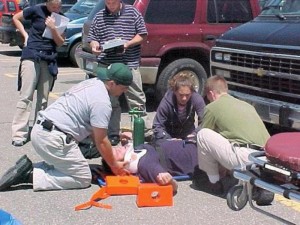 Vehicle collisions can and most often are traumatic. So much is happening, and you may not understand what you need to do. Save this article on your computer or in your vehicle just in case you find yourself in a vehicle collision.
Vehicle collisions can and most often are traumatic. So much is happening, and you may not understand what you need to do. Save this article on your computer or in your vehicle just in case you find yourself in a vehicle collision.
You and Your Passengers Must Wear Seat Belts?
Most drivers, no matter how carefully they drive, will be involved in one or more vehicle collision throughout their lifetime. The chances of you being killed or injured in a vehicle collision are greater than you may think. One person in three is going to be injured or killed. To increase your odds of surviving an accident, use your seat belts each and every time you are in a moving vehicle. Ensure you and your passengers wear both your lap and shoulder belt if the vehicle comes with both, whether or not the vehicle comes with air bags. Wear your seat belts each and every time you drive. It’s the law!
Children eight years and older, but under 16 years old must be properly secured by having an appropriate safety belt. Children under eight years old, who are less than 4 feet 9 inches tall, have to be properly secured in a child passenger restraint system which fits federal safety standards. However, children under eight years old, that are 4 feet 9 inches tall or taller, may be secured with an appropriate safety belt.
Here are a few additional techniques for using a child passenger restraint system:
The back seat is the safest place in the car for kids 12 years old or younger.
Children, who weigh to 20 lbs. up to age 1, must be secured in a child passenger restraint system secured to the back seat facing the back of the car. Children must not be placed facing forward or backward in the front passenger seat if the vehicle comes with an air bag. Your local law enforcement agencies, fire departments, or perhaps a child passenger safety (CPS) technician can check out proper installation of your child passenger restraint system.
Common Causes of Vehicle Collisions
A few of the common reasons for vehicle collisions are:
- Unsafe speed
- Driver distractions
- Driving on the wrong side of the road
- Improper turns
- Violation of the right-of-way rules
- Violation of stop signals and signs
- Cellular telephone use
Choosing a Lane
When news stations report vehicle collisions, they refer to numbered traffic lanes. The left lane is the “Number.1 Lane.” The lane on the right of the “Number 1 Lane” is the “Number 2 Lane”, then the “Number 3 Lane”, etc.
For anyone who is made aware of a motor vehicle collision through the news or your GPS, avoid driving close to the collision or take another route, if possible. In the event you must drive near a collision scene, do not slow down or stop and look at the accident because you could cause another collision. Drive carefully and watch for people in the road. Always obey an order from a police officer or firefighter directing traffic at a vehicle collision scene, even if you must ignore normal traffic laws or signs to accomplish this.
When You See a Motor Vehicle Collision
Should you be the very first person at a vehicle collision scene, pull completely off the road, away from the collision. Emergency personnel have to be able to see the collision and stop next to it for quick access to injured persons.
Determine if someone is injured. Search the area for victims who may have been thrown from a vehicle. They can be hidden in tall grass or bushes.
Call 9-1-1. If another person stops to help, ask that person to call 9-1-1.
The individual calling 9-1-1 must be prepared to respond to questions and supply information, including the location of the emergency (cross streets, freeway on/off ramp information) and exactly how many people require assistance (is anyone bleeding, unconscious, or with no pulse).
Don’t hang up the phone! Allow the emergency dispatcher to hang up first.
If at all possible, use flares or emergency triangles. If you find a gasoline leak or fumes, don’t use the flares and don’t smoke!
Help anyone that isn’t already walking and talking. Do not move an injured person unless she or he is in a burning vehicle or perhaps in other danger. Moving someone incorrectly often makes an injury worse.
Move the automobile(s) involved out of the traffic lane if it’s not disabled. Turn off the ignition of wrecked vehicle(s). Don’t smoke! Fire is a great danger.
If you are Involved In A Collision?
In case you are involved in an automobile collision-STOP. If you don’t stop, you may be convicted of a “hit and run” and may be severely punished. Someone could be injured and require help. Call 9-1-1 immediately to report the collision to the police or CHP. You must show your driver license, vehicle registration card, proof of financial responsibility, and current address to the other driver or persons involved in the accident, or any peace officer. Evidence of financial responsibility is usually an insurance provider name and a policy number. If you do not have it, you will get a citation along with a $250 fine.
You must do the following:
Move your motor vehicle off the street or highway if no one is killed or injured. Should you not move your motor vehicle or have it taken off the road or highway, any peace officer or authorized personnel may have your motor vehicle removed and impounded. (CVC §§22651 and 22651.05)
Pull to the side of the road and stop in the event you kill or injure an animal. Look for the owner. In the event you can’t find the owner, call the nearest humane society, police, or CHP. Don’t attempt to move a wounded animal. Never leave an injured animal to die.
Try to look for the owner in the event you hit a parked vehicle or any other property. Identify yourself before you leave. In the event you can’t find the owner, leave a note with your name and address (and the name and address of the owner of the vehicle that you are driving) inside the vehicle or securely attached to it. Report the collision without delay to the police or, in unincorporated areas, to the CHP.
Report the collision in writing to the police or CHP without delay if anyone is killed or injured and law enforcement wasn’t present at the scene. In the event the driver of the vehicle involved in a collision is physically unable to report a collision to the police or CHP, any occupant inside vehicle at the time of the collision shall make the report on behalf of the driver.
You or your agent, broker, or legal representative should do the following:
Report the collision by completing a Report of Traffic Accident Occurring in California (SR 1) to the DMV within 10 days when there is in excess of $750 in damage to the property of any person, or anyone is injured (no matter how slightly) or killed.
How Much Insurance are you required to have?
You must be financially responsible for your actions whenever you drive as well as for all motorized vehicles you own. Most drivers decide to have an automobile liability insurance policy as evidence of financial responsibility. If you have a collision not protected by your insurance, your license will be suspended. When the driver involved in the collision is not identified, the owner of the motor vehicle involved will have his or her driver license suspended.
The minimum amount your insurance must cover in the state of California is:
$15,000 for a single death or injury.
$30,000 for death or injury to multiple people.
$5,000 for damage to property caused by one accident.
Reporting a traffic accident to DMV
If you have a collision, report it to the DMV using the SR 1 form. You or your insurance agent, broker, or legal representative must complete the SR 1 report and send it to the DMV within Ten days if a person is injured (regardless of how minor the injury) or killed or property damage is over $750. The SR 1 report is necessary in addition to every other report made to law enforcement, CHP, or your insurance company.
The SR 1 form is available at DMV field offices, at CHP offices, or online at www.dmv.ca.gov. The SR 1 form is necessary whether you caused the collision or not, and even if the collision occurred on private property.
Your driving privilege is going to be suspended if you don’t complete a SR 1 form or if you didn’t possess the proper insurance coverage at the time of the automobile collision.
Every vehicle collision reported to the DMV by law enforcement shows on the driving record unless the reporting officer says someone else was at fault. Unless there is a corresponding police report on file that indicates someone else was at fault, every vehicle collision reported by you or some other party in the collision will likely show on your driver record if:
Any vehicle or property involved has over $750 in damage, or
Anyone is injured or dies.
It does not matter who caused the vehicle collision. The law says DMV must keep this record.
California Motor Vehicle Accident Recap
The subsequent information can help you complete the SR 1 form (maintain it in your glove box). Avoid the use of this article instead of filing the SR 1 form.
Your insurance company name and policy number.
Time and date of the accident.
Location of the accident.
NOTE: You have to give your current address and show these documents to any peace officer and person(s) involved in the vehicle collision:
Your driver license.
Your vehicle registration card.
Evidence of financial responsibility which includes your insurance company name and policy number.
Other Party’s (Driver’s) Information:
Driver’s date of birth.
License number and state.
Driver’s name and address.
Vehicle license plate number and state.
Driver’s insurance company name.
Policy number and expiration date.
Policy holder’s name and address.
Vehicle owner’s name and address.
Injuries or property damage.
The Law Offices of Norman Gregory Fernandez & Associates handles car accident cases and other motor vehicle accident cases all over the state of California. You can read about these cases at http://www.thepersonalinjury.com . If you want to discuss your case, you may call us for a free consultation at 800-816-1529 x. 1.
California Car Accident Attorney Website

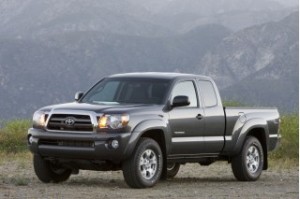


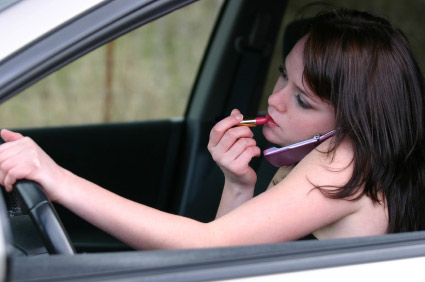


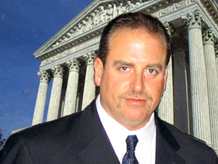 As all you Californians know, we have had a series of bad storms over the past week. Now this is nothing new to Northern Californians, but Southern Californians are definitely not used to the rain and snow.
As all you Californians know, we have had a series of bad storms over the past week. Now this is nothing new to Northern Californians, but Southern Californians are definitely not used to the rain and snow. Maclaren is recalling at least 1 million umbrella strollers because of a potential hazard to children’s fingers. A side hinge mechanism poses the risk of cutting or amputating a child’s fingers when the stroller is being opened or closed, the British company said Monday.
Maclaren is recalling at least 1 million umbrella strollers because of a potential hazard to children’s fingers. A side hinge mechanism poses the risk of cutting or amputating a child’s fingers when the stroller is being opened or closed, the British company said Monday. SAN DIEGO, California –
SAN DIEGO, California –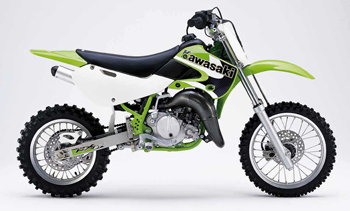 I was reading a story whereby a 14-year-old girl from Woodacre, California was airlifted to an Oakland hospital Sunday afternoon after a collision between two off-road motorcycles in Novato.
I was reading a story whereby a 14-year-old girl from Woodacre, California was airlifted to an Oakland hospital Sunday afternoon after a collision between two off-road motorcycles in Novato.